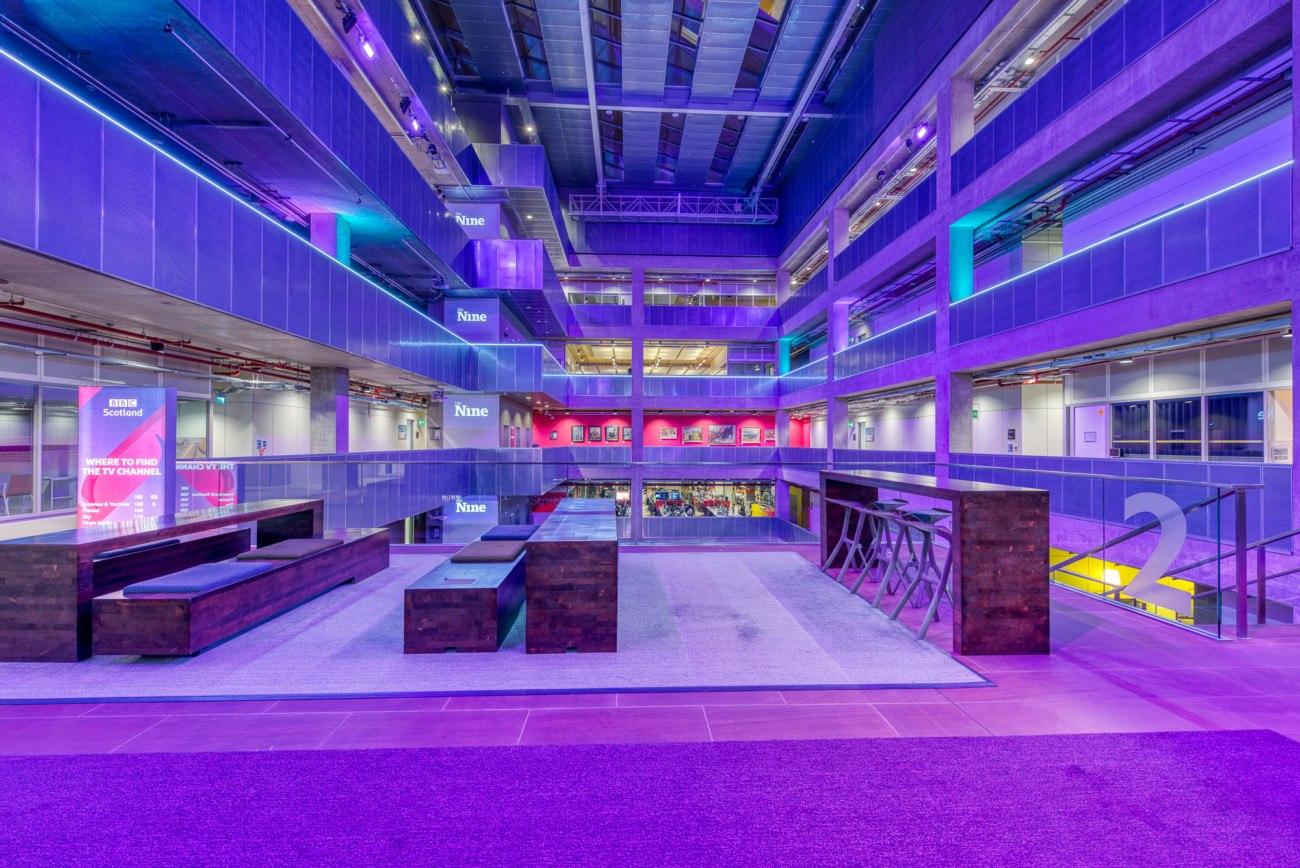
Introduction
Today’s modern office needs a different approach to lighting; it should be flexible, adaptive to changing functions and user preferences, and energy-efficient. According to the IEA, lighting is the largest end-use of electricity in offices across Europe, accounting for 40% of all electricity consumption* (ranging from 25% in air-conditioned offices to 70% in non-air conditioned).
Smart lighting controls, in combination with daylighting (the illumination of buildings by natural light), can reduce energy use in offices by as much as 60%, while occupancy detection can make up to 44% in savings compared to a no-control scenario**.
End-user functionality is also important; in a recent study*** 33% of office workers stated that they would like to personalize their overhead and desk lighting, and the levels of daylight coming in. Giving occupants more individual control over lighting is also required by green building certification systems, such as LEED and BREEAM****.
Easy-to-use end-user interfaces on mobile devices, with which office workers can easily adjust and change their light settings, are replacing the difficult-to-use touch panels of the last decade. In a recent study**, one in three office workers stated that access to comfortable light (intensity and color) is important for their daily health, and count lighting as the #2 aspect that most affects their performance at work (with air quality being #1).
The use of daylight both for energy savings and for the well-being of people is important and research shows that it also increases employee productivity. Architectural approaches, like biophilic design, also aim to increase the comfort and well-being of office workers by connecting the interior space to the outdoors, both with daylight and with circadian light profiles that provide a similar tonality and intensity to the natural light found outdoors.
* Building Stock Distribution and Electricity Use for Lighting, A Technical Report of IEA SHC Task 50, International Energy Agency (IEA), 2016, Available from: http://task50.iea-shc.org/data/sites/1/publications/Technical_Report_T50_D1_final.pdf
** Lighting Energy Savings in Offices Using Different Control Systems and Their Real Consumption, B. Roisin, M. Bodart, A. Deneyer, P. D’Herdt, 2008, Available from: https://www.sciencedirect.com/science/article/abs/pii/S037877880700134X
*** Future Workplace Wellness Study, View, 2019, Available from: https://view.com/sites/default/files/documents/workplace-wellness-study.pdf
Research findings are based on a global survey conducted by Savanta across the United States and Canada between April 23 – 29, 2019. For this survey, 1601 respondents were asked general questions to explore thoughts on workplace environment, personalization of the work environment, andprivacy and security at work. The study targeted 18 to 74 year olds that work in a corporate office environment at least 3 days per week.
**** LEED IEQ Credit 6.1 Controllability of Systems – Lighting : For at least 90% of individual occupant spaces, individual lighting controls should be provided to occupants to adjust the lighting to suit their individual tasks and preferences, with at least three lighting levels or scenes (on, off, midlevel)
BREEAM 5.0 Health and Wellbeing – Hea 01-Visual Control – 11. Zoning and occupant control : In office areas, internal lighting is zoned to allow for occupant control in zones of no more than four workplaces
How wireless smart lighting control can help solve today’s challenges
Wireless smart lighting control caters well to today’s office facilities by directly answering the need for powerful, highly customizable lighting control while tapping into further energy savings with sensors, switches, and other smart devices.
Application highlights:
The building blocks of smart lighting control
Wireless smart lighting systems principally comprise four elements:
- The light controller This is the communication transceiver that controls the driver or the light-sensitive module within a luminaire itself.
- The central management software This gathers data and controls all the luminaires in the lighting network. Isolated lights can be remotely controlled or can be grouped together and controlled synchronously.
- The communication protocol This is the system of rules that allows lights within a network to exchange messages without the need for wired communications.
- The gateway controller This aggregates communication from the light controllers and backhauls data to a central management platform. Building management personnel can remotely monitor their lighting networks and analyze performance dashboards in real-time.
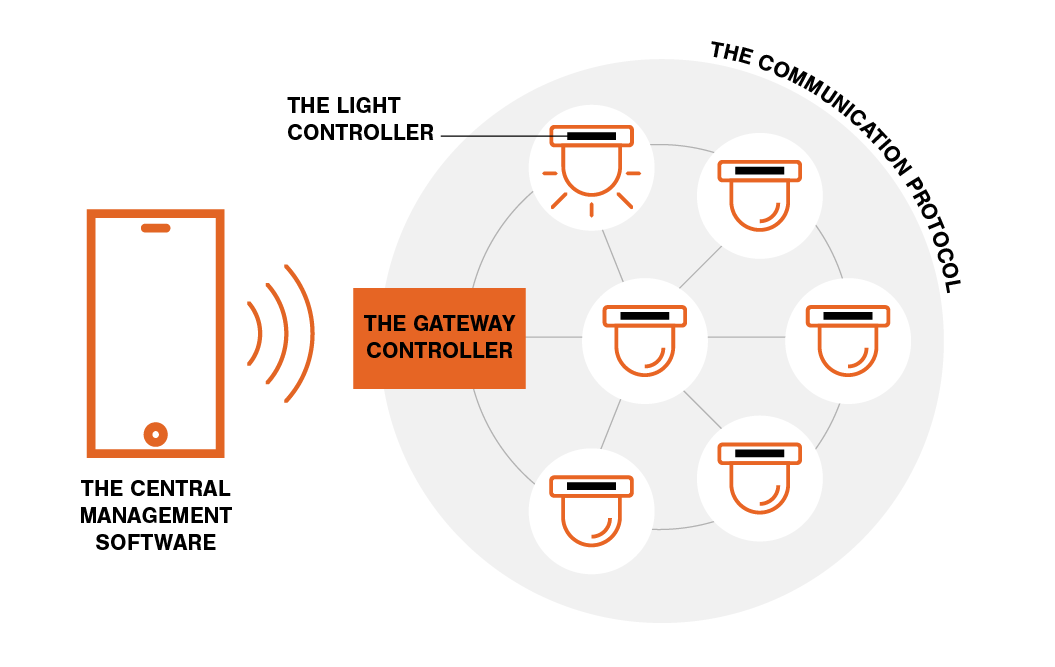
How Casambi can help
Casambi’s technology provides lighting designers and manufacturers with the ability to wirelessly link devices together enabling the creation of customizable smart lighting networks that are controlled via the Casambi App.
Our wireless lighting controls are based on BLE (Bluetooth Low Energy), which is the only low-power wireless technology found in all modern smartphones, tablets, and even smartwatches. The same technology is embedded into hundreds of luminaires and devices from all major lighting manufacturers, enabling you to enjoy the benefits of smart lighting in your office without the need for special wiring, or any complex hardware requirements.
Our open ecosystem architecture is a generation ahead of the proprietary legacy systems currently on the market. All of the company’s native products and all of our partners’ Casambi Ready products are 100% compatible with each other. The technology is also integrated into fixtures, drivers, switches, sensors, and a diverse collection of modules.
Casambi collaborates with a vast number of leading luminaire, driver, LED board, LED lamp, and lighting control module manufacturers. Currently, there are 1000+ (and counting!) Casambi-enabled products available – all utilizing the simplicity of safe and reliable wireless communication. Thanks to its simplified system architecture and user interfaces, Casambi is easy and fast to specify, install, commission, and use.
Application highlights:
- Occupancy detection.
- Scheduling and timers.
- Daylight harvesting and daylight-responsive blind controls.
- Circadian lighting profile / human-centric lighting.
- Simple end-user interface on mobile devices for individual lighting control.
- Easy control of direct/indirect lighting over workstations.
- Non-disruptive installation and easy commissioning.
- Changes in control groups or light scenes can be applied at anytime.
- Reduced operational costs.
- Wireless emergency lighting with automated testing and reporting.
- Open platform to monitor energy savings and control assets.
How It Works
- There are two options for adding Casambi functionality to luminaires:
- Option 1: Select a Casambi Ready luminaire from our ecosystem partners, which will ensure out-of-the-box interoperability in terms of connectivity and performance.
- Option 2: Luminaires with integral drivers (DALI, 0-10V, 1-10V), decorative fixtures with LED lamps, or other devices can gain BLE wireless connectivity using Casambi CBU devices.
- You can also use Casambi Ready switches, sensors or even air purifiers with wireless mesh functionality and increase the interaction options and connectivity of your network.
- No special wiring for lighting controls is needed. Decisions on lighting control groups can be made or updated at any stage, without any interruption to installations.
- The typical range for wireless connectivity is 30 meters for indoors, and 50 meters for outdoors.*
- All devices (nodes) within a Casambi mesh network carry the complete system intelligence, and all nodes speak to each other. Unlike other wireless communication technologies, there are no central communication units that could become a weak link for uninterrupted communication. If one node fails, the communication continues via other nodes.
- All system configurations and end-user controls are handled via the Casambi App on mobile devices, available for free on iOS and Android.
- A Casambi network can contain up to 250 devices and an unlimited number of networks can be created in a single site, giving endless possibilities to scale up in the future.
- Each Casambi network can be connected to existing DALI networks, via the Casambi DALI Gateway.
- Pick any luminaire from the Casambi Ecosystem or upgrade your luminaire to Casambi using one of our CBU products.
- Add daylight sensors from the Casambi Ecosystem and save up to 60% energy depending on the daylighting conditions.
- Add presence detection sensors from the Casambi Ecosystem and save up to 44% energy.
- You can create and change control groups or add new light scenes easily via the Casambi App.
- Each node in the Casambi mesh network carries 100% intelligence of the whole network, so if one of the nodes stop working, there is no interruption to the rest of the network.
- Should occupants prefer using a switch to control their lighting, it is easy to addthem to the network at any time via the app. If you need commissioning support, our commissioning partners are ready to help.
- One network can contain 250 nodes. No control wires, no gateways, no extra hardware needed. (Show network w lines).The network can speak directly to your mobile device. If you need cloud connectivity, interfacing building management systems, or standards such as KNX, you can use a gateway. Connection to an existing DALI network is also possible.
- Your emergency lighting can also go wireless using the wireless emergency system, which has been developed in partnership with Tridonic, and enables automatic testing and reporting.
- The Casambi Ecosystem comprises of thousands of products including air purifiers, air quality sensors, switches and occupancy, daylight and motion sensors.
What added value does Casambi bring to your Project?
100% interoperability in the Casambi Ecosystem
- The Casambi Ecosystem consists of 1000+ interoperable lighting products, including luminaires, drivers, sensors, switches, dimmers and other control gear from all major lighting manufacturers.
- All ecosystem products share the same core, meaning 100% interoperability and full performance, for today and the future.
Maximum flexibility and scalability
- Casambi offers unlimited scalability – a single network consists of 250 units and an endless number of networks can be created and used within a single site, giving the end user endless possibilities to scale up in the future.
- No additional tools or software are needed to configure and use a Casambi network – just a smartphone or tablet and the Casambi App, free to download for iOS and Android.
- Office layouts, room partitions or preferences may change – with the easy-to-use Casambi App, you can change control groups, light scenes and create new ones[MF1] [DC2] at any time. In wired systems, changes in control groups can be difficult to implement as the flexibility is limited with the communication cables that were originally installed [MF3] [DC4] at the time of construction.
- With Casambi, such changes can be performed remotely and at any time without the need to visit the site for simple scene updates.
Secure and robust
- Full encryption of communication between mobile devices and end nodes and security measures for authorization means all data that is transmitted in a Casambi network is 100% protected and safe.
- All nodes in a Casambi mesh network carry a backup of the entire system, which speeds up the communication and makes the communication more robust.
- All Casambi Ready products are built in a standardized hardware and software environment, and all Casambi components receive over-the-air updates. New functions are also made available to the user regularly and free of charge.
Easy to install, commission and use
- Install:
- No wiring for lighting control means fast and non-disruptive installation for buildings in use.
- Simple network – BLE is the only low power wireless technology found in all modern smartphones, tablets and smart watches. No additional IT equipment, software or licenses are required to commission and operate the lighting control network. Additionally, no data communication cables, dongles, or gateways are needed.
- Commission:
- No additional tools or software are needed to configure and commission a Casambi network – just a smart phone or tablet and the Casambi App, which is free to download for iOS and Android.
- With the intuitive Casambi App, commissioning is simple and quick.
- For buildings in use, end users can change control groups, light scenes and create new ones at any time. Changes can also be programmed remotely, without the need to visit the site.
- Casambi Pro, our new configuration and commissioning tool, enables offline pre-commissioning which significantly reduces the time spent on site. All that is left to do on site is the pairing of devices and testing.
- Use:
- All products in a Casambi network can be controlled via a mobile device with the Casambi App, as well as any wall-mounted or wireless switch from the Casambi Ecosystem. You can also retrofit a traditional wall switch with a Casambi CBU Bluetooth module, and you are ready to go.
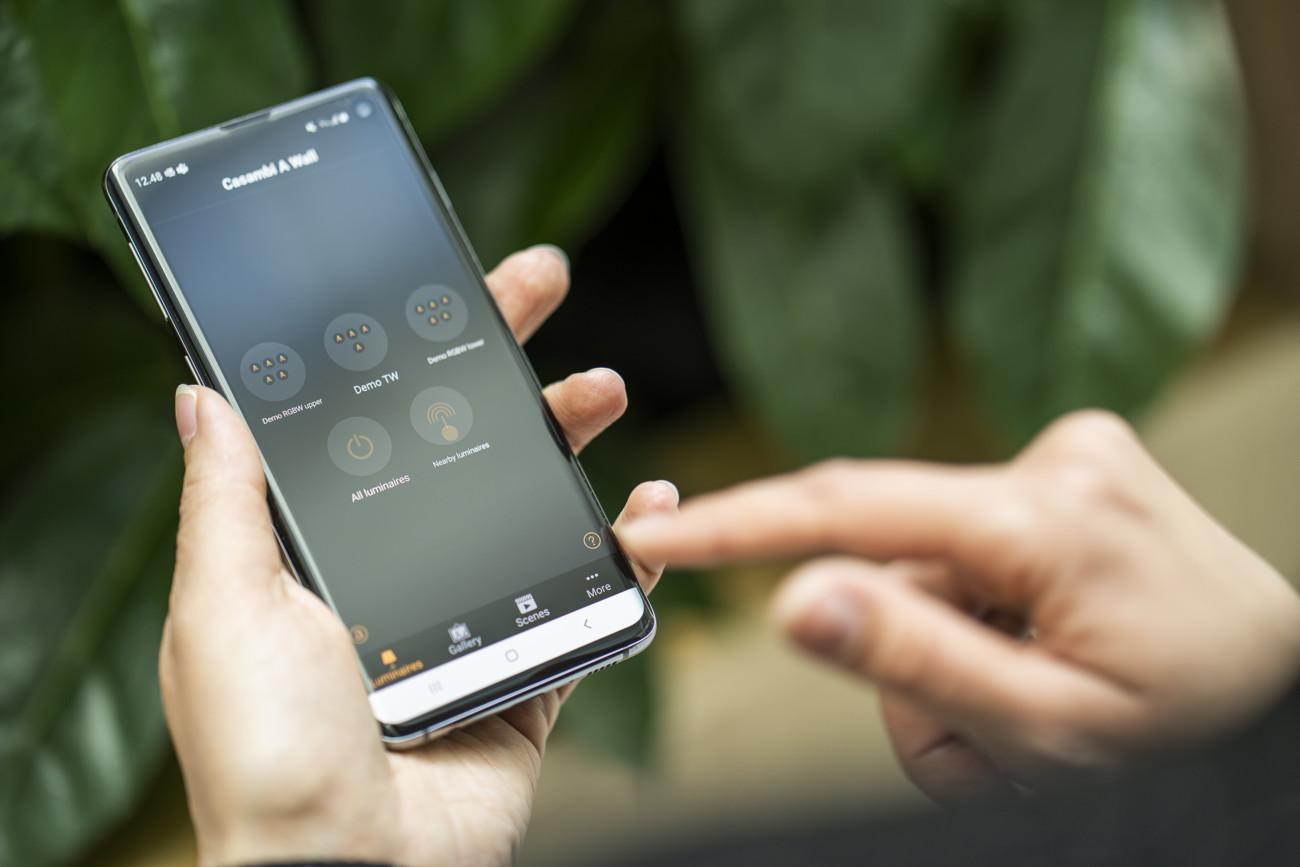
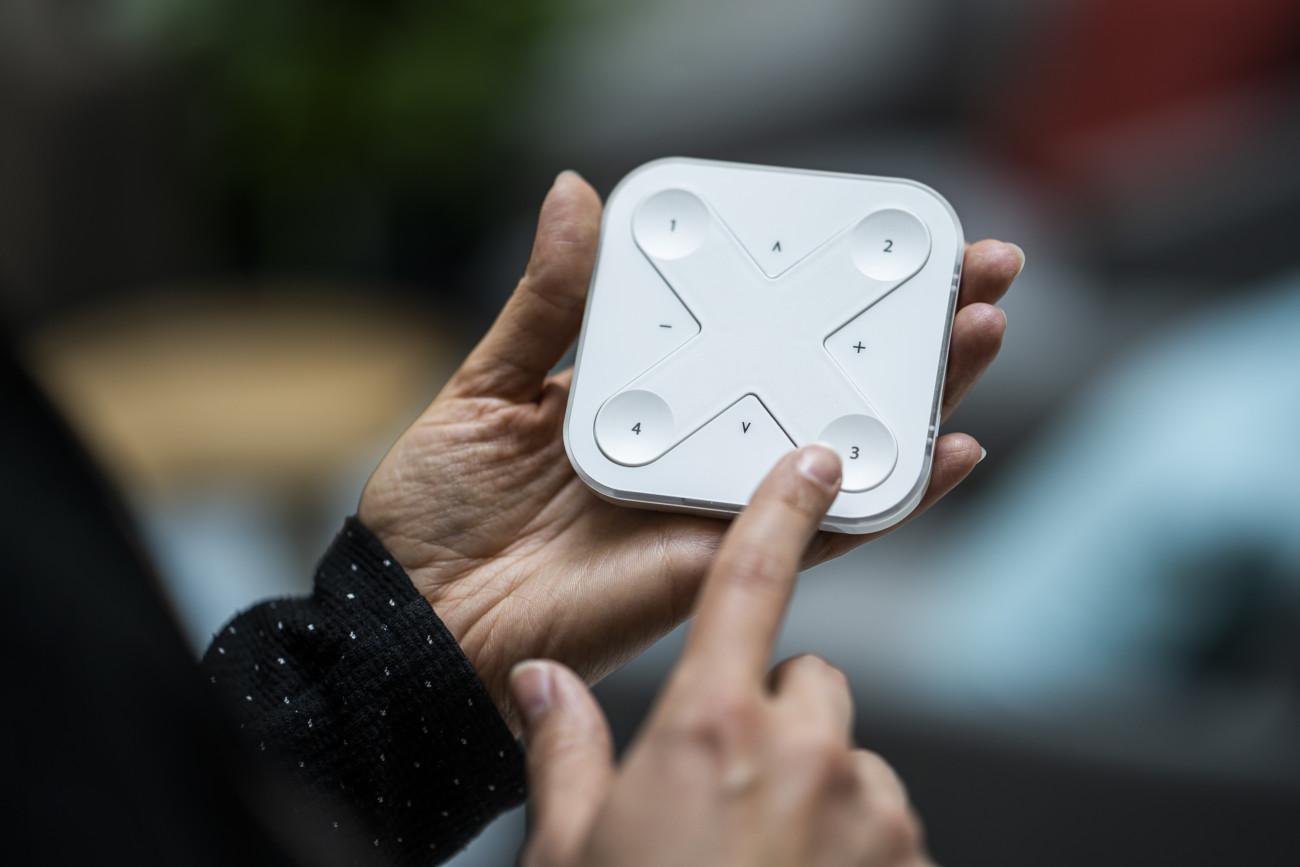
- Casambi CBU units can be placed as external devices to the luminaires, making them a building asset, which can then be reconfigured and used with changes in functions, tenants, etc. This makes Casambi a completely future-proof lighting control solution.
Cost savings at every step of your project:
- Up to 40%* in energy savings can be achieved in offices using a multiple control strategy combining occupancy detection and daylight harvesting. With Casambi, any existing light installation can be upgraded to include occupancy and daylight sensors.
- Easy and fast installation due to no special wiring needed for data communications, and rapid commissioning via the the Casambi App helps save you time and money.
- Automatic testing and reporting of the Casambi wireless emergency lighting system provides operational cost savings thanks to eliminated periodic on-site manual testing.
- Simple commissioning tasks can be handled by facility managers, or our commissioning partners can provide quick and reliable recommissioning services. The simplicity of Casambi networks saves time and costs on the recommissioning of networks in operating buildings.
DALI Interface
With the Casambi Wireless DALI Gateway, wired installations can be expanded wirelessly, making Casambi the ideal solution for renovations or extensions.
Wireless emergency lighting
- The wireless emergency lighting system, developed by Casambi and Tridonic, offers a simple yet failsafe solution where the mains and emergency lighting fittings can be part of the same mesh network. Additionally, automatic system monitoring and reporting can be run centrally and over the cloud. All test data can then be later accessed locally and via a web browser.
- The Casambi wireless emergency solution, unlike other wireless emergency lighting systems, brings additional strength to the wireless mesh and overall system, as well as supporting DALI DT1 standard devices – meaning reliable interoperability with DALI local battery emergency control gear. DT1 interoperability provides advanced data extraction capabilities from devices for any other analytics that may be required.
- With Casambi, your emergency lighting control system can be future-proofed for any data extraction and processing requirements that may arise in the future; all thanks to the possibility of receiving automatic firmware upgrades and new features over the air.
Tap into the IoT for office
- Through its cloud API, Casambi networks can be integrated into IoT tools that enable network monitoring and the usage of collected data from the network – your lighting network then becomes part of the smart building infrastructure.
- The Casambi API consists of Rest API & Websocket services, and all receive data is in human-readable JSON format.
- Casambi supports iBeacon profiles for those seeking a fully connected office experience
Office case study
The BBC installs Casambi controls across nine UK sites

The BBC’s output reaches more than 400 million people worldwide every week, and its TV news operation is the biggest in the world. In 2020, the organization decided to bring the same forward-thinking approach to its buildings, which house numerous TV and radio studios, data centers, and offices. The BBC is on a mission to reduce energy use, improve comfort for staff, and introduce smarter, more flexible control. All upgrades had to achieve energy reductions of at least 20% to go ahead, in line with the BBC’s sustainability strategy.
The broadcaster’s technical services team originally decided to bring Casambi’s lighting control solution to seven of its buildings, allowing lights to be controlled wirelessly from mobile devices.
At Broadcasting House, the BBC’s London HQ, 2,000 fluorescent light fittings in the new part of the building have been replaced with LED alternatives, together with new sensors and Casambi wireless control. The eight-story Broadcasting House operates 24 hours a day and is home to BBC News – the world’s biggest TV news operation – and several radio stations, including the World Service. The installation at Broadcasting House was carried out during late evenings, and each area being upgraded had to be ready the following morning when staff returned to their desks, so there would be no disruption. Being completely wireless, Casambi was the ideal solution for quick and non-disruptive installation. The BBC finally installed Casambi’s wireless lighting control system across nine of its UK buildings, with several more sites to follow.
Sensors from Tridonic and Danlers have been installed to enable presence/absence detection and daylight dimming, ensuring lights are only on when they are needed. Energy-harvesting wireless switches from EnOcean have also been used, which provide another easy way for staff to control the lights.
Number of Casambi nodes: 10,000 +
Customer benefits:
- A wireless control system that enables the user to personalize their lighting via the intuitive Casambi App.
- A 1:1 replacement of the luminaires without changing the existing electrical installation.
- Energy savings using Casambi enabled presence/absence detection and daylight harvesting.
- Quick and non-disruptive installation.
- Improved lighting conditions with tunable white light.
- EnOcean energy-harvesting wireless switches, which provide another easy way for staff to control the lights.
Meet the Team
Casambi announced this year the formation of a Specification Success Team. Their mission is to see that all specification customers have a great experience using Casambi. Presently, the team comprises four lighting control design specialists, spanning four countries and with a deep collective knowledge of the smart lighting movement.
Duygu Cakir – based in Istanbul, Turkey

Duygu is the team lead. She joined the company in 2021 from SLD Studios, where her experience as partner and principal consultant in the EMEA region is key as Casambi fortifies its support strategy. Duygu has overseen many projects of scale from airport terminals, multi-use complexes, offices, commercial centers and much more. Listed in ‘40 Under 40’ by Lighting Magazine UK, Duygu is a highly knowledgeable and formidable industry force. She holds a BSc in Electronics and Communications Engineering, an MSc in Lighting Design and Technology, and an MSc in Energy Technologies and Management.
‘Casambi’s platform can help achieve complex functionality with ease. As a team, we are on a drive to raise awareness amongst specifiers of the simplicity of planning a project with Casambi controls. It’s something they can do without relying on a commissioning engineer. We can attest to this because we, too, were once specifiers and therefore have a deep understanding of the daily challenges faced by our clients’
Leticia Mori – based in Madrid, Spain

Leticia is a civil/structural engineer with a master’s degree in Energy Efficiency. Over the years, Leticia has worked on many kinds of lighting projects spanning the industrial, hospitality, office, residential, and retail segments. She has participated in every phase of these projects from understanding clients’ needs to delivering fixtures on-site, and everything inbetween including lighting calculations, plans, technical documentation, and purchasing.
‘The world is constantly changing and nowadays we look for simpler and faster solutions. This is exactly what Casambi offers in the lighting field: a wireless lighting control solution that is quick and easy to install, and a powerful user interface – the Casambi app – that anyone can use. In addition, Casambi’s solution is proven to reduce energy consumption and promote well-being as it offers many control possibilities such as dimming, daylight control, circadian rhythm, timer, and so on. This speaks to my heart as someone who has conducted energy efficiency studies.’
Selen Celik-Gungor – based in Espoo, Finland
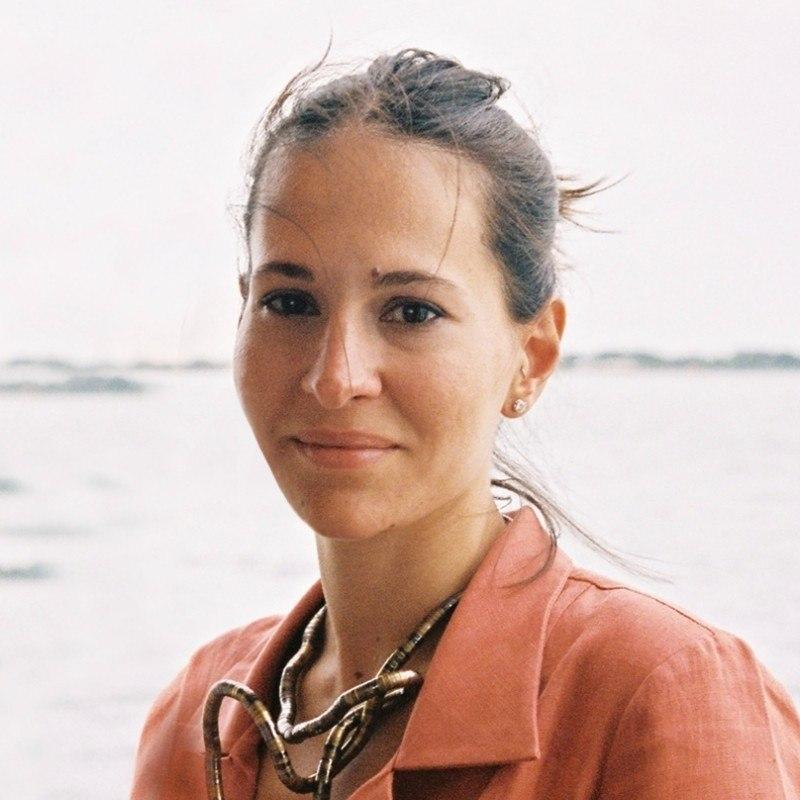
Selen holds a bachelor’s degree in architecture and has completed two master’s degrees in lighting design. She has worked as both an architect and a lighting designer. Her main responsibilities have spanned concept development, lighting planning, and calculations. On each of her projects, Selen focused on the relationship between light & human, light & science, and light & space.
‘We as designers are always talking about energy-saving and LED technology. I believe Casambi is one of few companies that truly enables energy-smart functionality and easy/flexible control of lighting designs. Controlling is not a new topic for us within the lighting industry, but Casambi has brought a new freshness with its features. I believe, nowadays, lighting design should be less about the final design and more about selecting the right product and technology depending on the project.’
Karla Martin – based in Milan, Italy

Karla obtained a bachelor’s degree in Industrial Design before going on to complete a master’s in Virtual Architecture and Interior. She has been working in architecture studios ever since.
‘I’ve worked as a lighting designer for many years – initially working with DALI. When I first discovered Casambi, I was bowled over by its simplicity, scalability, problem-solving capabilities, and the endless list of options it offers. Oftentimes, the first reaction to wireless tech is pretty negative or cautionary. There is this assumption that it will be overly complicated and expensive. I want to change this incorrect perception and open my industry peers’ eyes to the possibilities with Casambi.’








